safe passage
Wildlands Network’s Nikki Robinson reflects on Safe Passage TEDx Talk
By Nikki Robinson, North Carolina Project Manager, Wildlands Network
“How do you feel about roadkill?”
I asked this question countless times over the last few months while rehearsing my TEDx talk in front of friends and family. It was usually answered with a blank stare, and sometimes even a chuckle.
Many didn’t know how to respond. It’s not something they’ve considered, although all agreed it’s a bad thing. I kept asking.
Almost everyone has a personal anecdote of hitting an animal while in the car, or at least experiencing a close call. With larger animals, these incidents include unfortunate collision-related costs and injuries. So why are we not talking about this more?
Reducing roadkill is a win for human safety, a win for economics, and a win for the environment. And once that message becomes clear, people tend to open up about how they feel—and are interested in finding solutions to prevent it.
Recently, new federal funding opportunities for projects to reduce wildlife-vehicle collisions and reconnect natural landscapes were announced, and conservation groups are collaborating with state agencies to compete for these grants. We’re taking a positive step in the right direction to consider our long lasting impacts on the environment. Hopefully, that means lots of wildlife crossings will be added to our existing 4 million miles of roads across the country.
In the meantime, the next time you take a cruise, slow down—and watch for wildlife!
(It takes some time and practice to program these thoughts into your brain while driving. I was reminded to practice what I preach a few weeks ago traveling from Asheville to Boone, when a bobcat ran out in front of me on HWY US 221. The irony of almost causing a wildlife-vehicle collision while driving back from giving a speech on reducing roadkill was sickening. Luckily, both the bobcat and I escaped the encounter unscathed.)
In the News: Smoky Mountain Living interviews Safe Passage’s Jeff Hunter
In February 2022, Smoky Mountain Living magazine published “A Conversation With the Smokies’ Wildlife Crossing Guard,” an interview with Safe Passage facilitator and National Parks Conservation Association senior program manager Jeff Hunter.
In the article, Hunter spoke with reporter Holly Kays on wildlife crossings in the Smokies, as well as the work of Safe Passage: The I-40 Pigeon River Gorge Wildlife Crossing Project.
“Interstate 40 opened in the gorge in 1968, and at that time the bear population was probably a quarter of what it is today — if not less — and there were no elk on the landscape,” Hunter said in the interview. “Today we have a growing bear population and a growing elk population that’s on both sides of the highway.”
Hunter went on to describe the increase in mortality rates along this stretch of interstate, as well as the work being done to mitigate this increase, then added: “The park is big, but wildlife doesn’t recognize the boundaries. So we have to work outside the boundaries if we’re going to make an impact.”
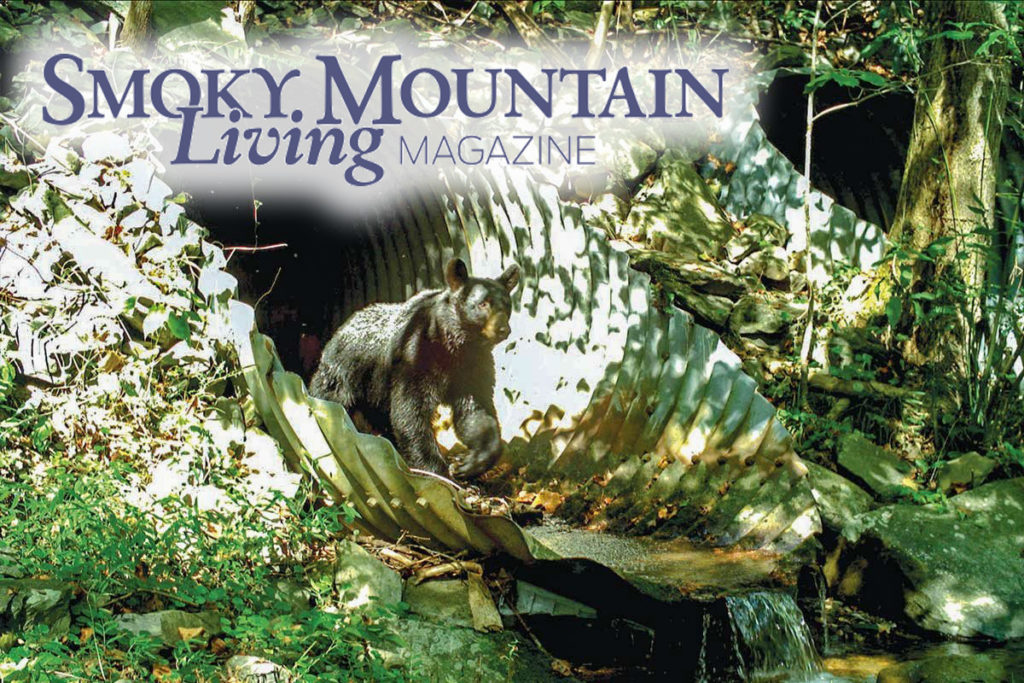
To read the full interview in Smoky Mountain Living, click here.
Safe Passage facilitator Jeff Hunter looks back on five years of progress since coalition’s beginnings
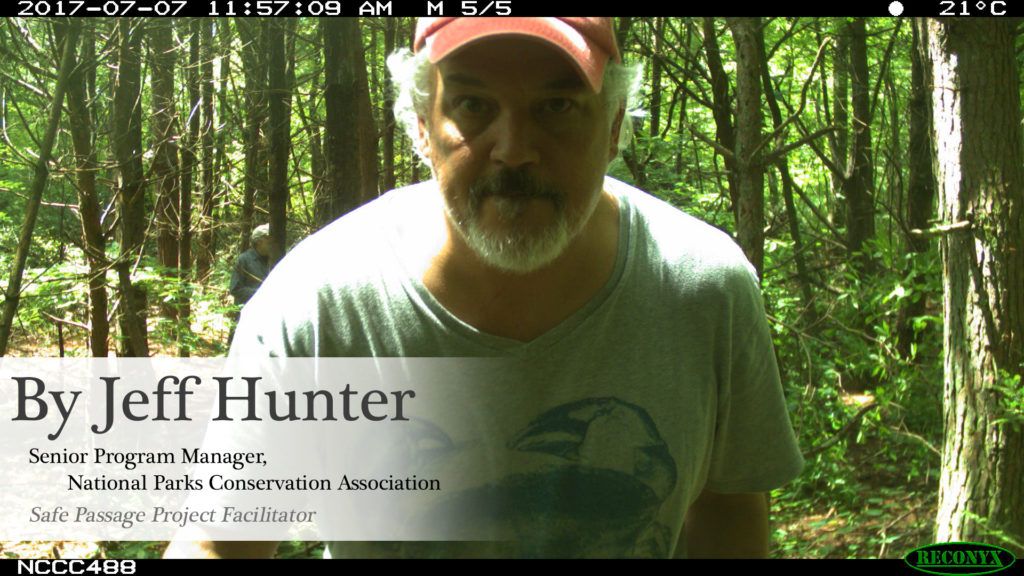
This week marks five years since the first meeting of stakeholders to discuss what has evolved into Safe Passage: The I-40 Pigeon River Gorge Wildlife Crossing Project. In early February 2017, more than 20 representatives from federal, state and nongovernmental organizations gathered in the Asheville office of Defenders of Wildlife to discuss elk and their habitat selection preferences. In translation: As elk expand into new territory, what types of habitat are they likely to move into?
All this was being driven by the Pisgah National Forest’s 12-Mile Project, which among other things, seeks to expand wildlife habitat in the Pigeon River Gorge. Several of us — including Hugh Irwin from The Wilderness Society and Kim DeLozier, then of Rocky Mountain Elk Foundation — were concerned that elk could wind up in the highway if we didn’t consider their response to proposed logging in the area.
A rich and impassioned conversation went back and forth, with representatives from agencies like the National Park Service, the U.S. Forest Service (Pisgah National Forest), Tennessee Wildlife Resources Agency and the North Carolina Wildlife Resources Commission offering their thoughts. Conversation over lunch was especially productive. As that initial meeting concluded, we agreed to explore the issue of wildlife-vehicle collisions on Interstate 40 together.
That led to a September 2017 meeting in Maggie Valley, North Carolina, where road ecologist Tony Clevenger, PhD, came to speak with the group and attend a field trip. Clevenger made it clear that we needed to conduct research to understand the extent of the problem.
Fast forward to October 2018, and we were back in Maggie Valley attending a two-day Wildlife Crossing Workshop facilitated by the Federal Highways Administration.
Just a couple months later, Wildlands Network and National Parks Conservation Association began an extensive two-year research project along a 28-mile stretch of I-40.
So, here we are in February 2022. The results of our research are in the final stages of analysis. In March 2022, stakeholders will once again gather to learn about the results and start to prioritize focal areas within our study area.
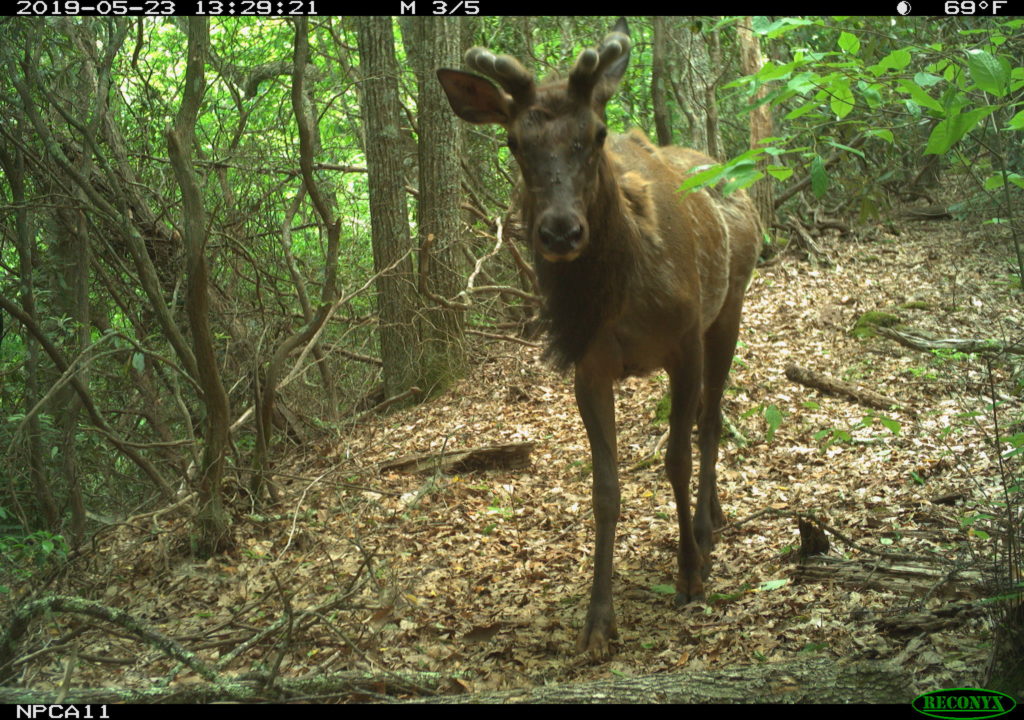
“Several of us were concerned that elk could wind up in the highway if we didn’t consider their response to proposed logging in the area.”
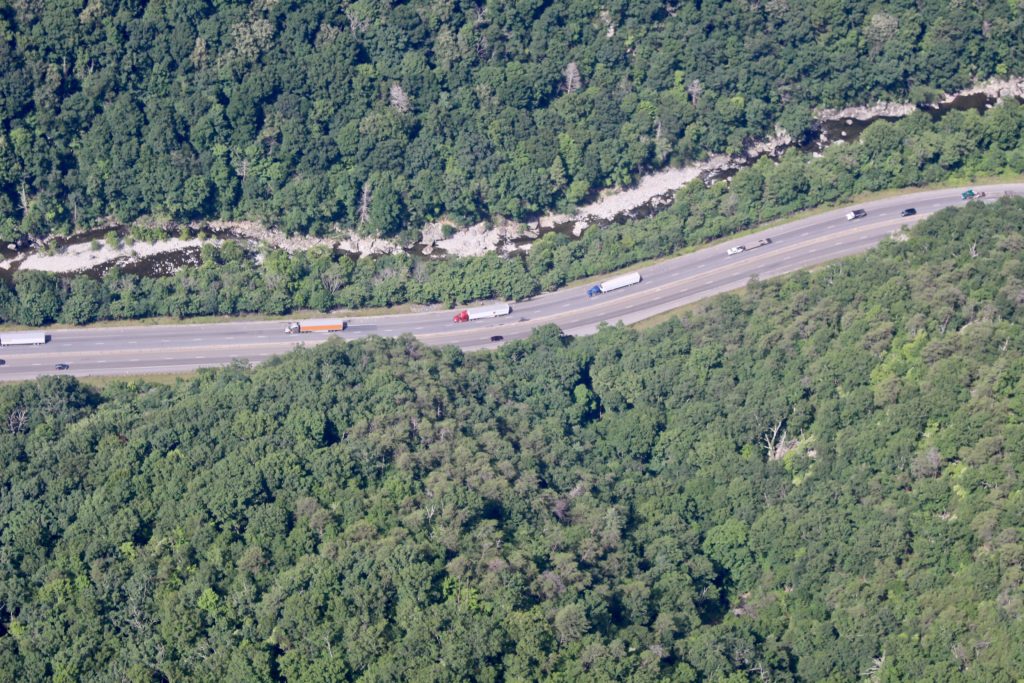
Yes, it’s an exciting time for wildlife — as we’re on the cusp of addressing what seemed like an intractable issue just five years ago!
I hope you’ll consider taking the Safe Passage pledge and perhaps donate to the Safe Passage Fund. Together, we can and will make a difference.
Jeff Hunter is a Senior Program manager with National Parks Conservation Association. He serves as the facilitator of the Safe Passage: I-40 Pigeon River Gorge Wildlife Crossing Project.
NCDOT to begin construction on wildlife crossing at Harmon Den
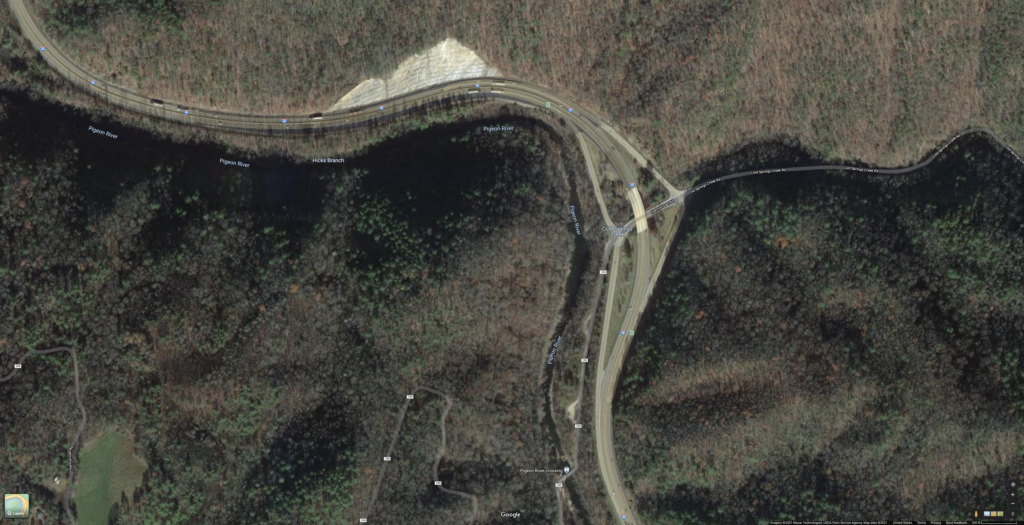
On Nov. 3, 2021, the North Carolina Department of Transportation announced preparations for significant construction on Interstate 40 over Harmon Den Road, at Exit 7 in Haywood County. Starting as soon as Nov. 9, a contractor for the NCDOT will begin work to replace the bridge at this exit, integrating wildlife crossings into the new structure.
The Harmon Den area has long been a hotspot for wildlife-vehicle collisions, and Safe Passage: The I-40 Pigeon River Gorge Wildlife Crossing Project has advocated for building a wildlife crossing at this location. When the NCDOT announced plans to replace the existing bridge structure here, Safe Passage and its partners collaborated with the agency for a safe solution to fit this particular site.
The plans for the new Harmon Den bridge include two paths — one on each side of Cold Springs Creek — to help wildlife migrate from one side of the interstate to the other without encountering vehicles. A 9-foot tall fence will guide animals to the trails, away from traffic and under the bridge.
NCDOT is also evaluating the use of wildlife guards — similar to slotted cattle guards — to prevent deer and elk from walking up the ramps. These measures will hopefully encourage wildlife to cross under the bridge and reduce the possibility of animal accidents.
“We are excited to be adding protections for wildlife in this and other upcoming NCDOT projects,” said Division 14 Engineer Wanda Austin in a press release from the NCDOT. “We have worked with a wide variety of interest groups, transportation, and wildlife experts to incorporate these unique features to benefit the people who drive the gorge, and the animals that live in the gorge.”
Austin has been a participating stakeholder in the Safe Passage collaborative since its inception in 2017.
The traffic management plan for this project includes a six-month detour around the bridge, with drivers utilizing the exit and onramps.
In late October and early November, construction crews from contractor Kiewit Infrastructure South have been mobilizing equipment and preparing to begin significant construction activities. By the first week of November, crews had already begun upgrading the exit and entrance ramps.
As soon as mid-November, all traffic will be funneled into a one-lane pattern prior to the bridge and will use the ramps as a detour around the bridge. Traffic will remain in this pattern into May 2022 while crews remove and replace the deteriorating structure.
In a feature article published by the Asheville Citizen Times on Nov. 5, Jeff Hunter, National Parks Conservation Association senior program manager and Safe Passage facilitator, thanks the NCDOT for its collaborative work to make I-40 a safer place for wildlife and motorists alike.
Black bears, elk, whitetail deer and other, smaller animals live in the surrounding mountains and naturally migrate across the area — and across the highway — looking for food, mates and habitat, Hunter told the Citizen Times.
In addition to the unique wildlife features, this five-bridge project is also the first of its kind in the state to be administered in a new method with the intent of forming a partnership between the NCDOT, the contractor and the design team. Kiewit Infrastructure earned the $19 million contract for the first of the five, which has a final completion date set in May 2024.
Exit 7 from I-40, where construction will soon begin to replace the existing bridge structure and add crossings for wildlife.
The current I-40 overpass as viewed from Harmon Den Road.
The result of the new construction manager/general contractor method is lower costs and expedited delivery from the first step in the design phase to the last inspection of the new bridge, and new safe passage underneath.
Drivers desiring to go from Asheville to Dandridge, Tenn., may choose to take I-26 West to Kingsport and then I-81 South to Dandridge. This route adds about 45 minutes to driving time compared to a typical trip through the gorge.
Accommodation or decimation: It’s time to choose how we share our mountains
Before you can solve a problem, you have to understand it. Like many other roadways around the nation, the Safe Passage project area — a 28-mile stretch along I-40 in western North Carolina and east Tennessee — has created a “barrier effect” for wildlife, fragmenting species’ habitats and separating wild animals from their needs.
Safe Passage is part of a growing national and global effort to create safe crossings for wildlife. Using a study and process known as road ecology, Safe Passage aims to help its target region plan and implement a variety of crossing structures, from culverts to bridge extensions and overpasses, designed just for animals.
A combination of fencing and crossing structures has been used successfully in countries all over the world, from France and Germany to Singapore and South Korea. In North America, Canada and Mexico have also successfully created effective crossings, and now, states like California, Colorado, Texas, Virginia, Washington and Utah are focusing on road ecology too.
Before coalition partners can begin increasing highway safety for animals and humans alike, states’ Departments of Transportation need scientific data to make informed plans. For the last two years, National Parks Conservation Association and Wildlands Network have been conducting field research to evaluate how roadways outside Great Smoky Mountains National Park influence black bear, white-tailed deer, and elk.
The researchers’ multi-faceted approach assesses wildlife’s use of existing structures, road mortality, and activity within the highway right-of-way. It also identifies and predicts elk road-crossing locations using movement information from GPS-collared elk. This will help identify areas along the interstate where mitigation strategies such as fencing and crossing structures could be best implemented to reduce wildlife–vehicle collisions and increase habitat connectivity.
